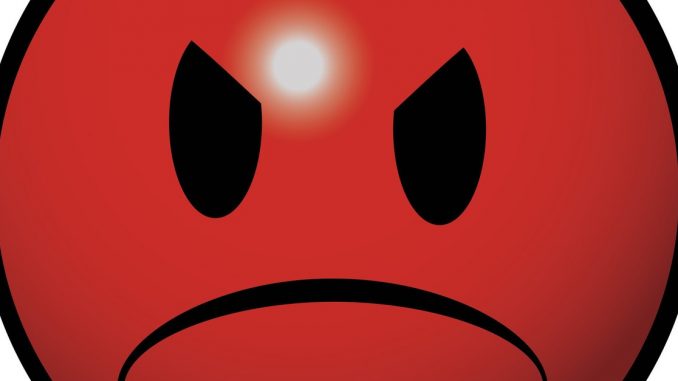
A 12-year-old girl faces criminal charges for posting a message with emojis of a🔫, 🔪, 💣 and a 👮.
The schoolgirl from Fairfax Virginia is accused of “threatening her school.”

BYPASS THE CENSORS
Sign up to get unfiltered news delivered straight to your inbox.
You can unsubscribe any time. By subscribing you agree to our Terms of Use
Latest Video
Business Insider UK reports:
The 12-year-old from Fairfax, Va., has been charged with threatening her school after police said she posted a message on Instagram in December laden with gun, bomb and knife emojis. It read in part:
Killing 🔫
“meet me in the library Tuesday”
🔫🔪💣
As emoji and their relative the emoticon have rocketed from web slang to the unofficial language of the Internet age, the case is one of a growing number where authorities contend the cartoonish symbols have been used to stalk, harass, threaten or defame people. And that has left the police and courts wrestling with how to treat a newly popular idiom many still dimly grasp.
A grand jury in New York City recently had to decide whether 👮 🔫 represented a true threat to police officers. A Michigan judge was asked to interpret the meaning of a face with a tongue sticking out: :P. Emoji even took a turn in the Supreme Court last year in a high-profile case over what constitutes a threat.
Such thorny questions are likely to only increase with the recent announcement that Facebook was rolling out a series of five face emoji users can select to react to posts in lieu of its ubiquitous “like” button.
“Emoji are new enough that people are finding their footing,” said Tyler Schnoebelen, a linguist and founder of a company called Idibon. “Almost all of these cases have emerged in the past couple years. They are all going into fresh legal territory.”
Emoji are icons of faces, hand gestures, fruits, animals and other items that can be embedded in text. They are often used to indicate the tone of a message, add emphasis or are shorthand for things or ideas.
Emoji shot to popularity in the United States after Apple included an emoji keyboard on its iPhone in 2011. The advertising company Swyft Media estimates 6 billion emojis and other pictograms are sent each day and a report by an Internet startup Emogi found 92 percent of the online population uses the icons.
That rise has led to challenges.
Police are trying to judge just how serious to take threatening messages using emoji, which are most often deployed in a light-hearted manner. Attorneys have argued over whether emoji should be presented to juries as evidence. Experts say the biggest problem is simply determining in court what a defendant actually intended by sending a particular emoji.
Is a winkie face emoji ironic, flirtatious or menacing? What exactly do the popular dancing girl or grinning pile of poo emoji actually mean — if anything — when appended to a message? Emoji have no set definition and their use can vary from user-to-user and context-to-context.
“You understand words in a particular way,” said Dalia Topelson Ritvo, assistant director of the Cyber Law clinic at Harvard Law School. “It’s challenging with symbols and images to unravel that.”
Ritvo said that some of these issues will likely play out in the Fairfax case.
It began on Dec. 14, when a resource officer at Sidney Lanier Middle School in Fairfax was made aware of the threatening Instagram post and others, according to a search warrant.
The officer began interviewing students and sent an emergency request to obtain the IP address of the user associated with the Instagram account. The investigation led to the 12-year-old, who was also a student at Lanier. The Post generally does not name juveniles accused of crimes.
The search warrant states the girl admitted to authorities she posted the messages on Instagram and did it under the name of another student. She was charged with threatening the school and computer harassment. A spokesman for Fairfax County schools said the alleged threat was deemed “not credible.”
The girl is scheduled to make her first appearance in juvenile court on the charges at the end of the month. Authorities have not released a motive in the case, but the girl’s mother said the girl posted the messages in response to being bullied at school.
“She’s a good kid. She’s never been in trouble before,” the woman said. “I don’t think it’s a case where there should have been charges.”
Ritvo said the girl’s message sounds threatening, but prosecutors and the judge will have to sort out whether the bomb, gun and knife emoji indicated a desire to threaten the school, simply anger, or something else entirely.
Other cases have run aground on similar distinctions.
Last year, a New York City teen was charged with making a terrorist threat after posting a message on Facebook that read “N–a run up on me, he gunna get blown down” followed by a police officer emoji and three gun emoji pointed at the icon’s head.
A grand jury later declined to indict Osiris Aristy, 17, on the charge and his attorney said the case was one of overreach by law enforcement. Fred Pratt said he’s seen other clients use emoji the same way.
“I think something is definitely lost in translation,” Pratt said of the police interpreting the teens’ emoji use. “These kids are not threatening cops, they are just trying to say, ‘I’m tough.’ It’s posturing.”


